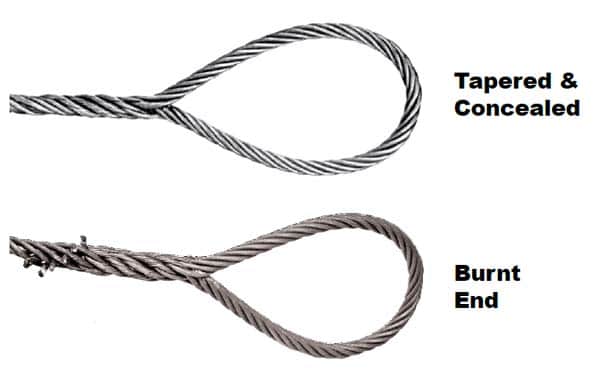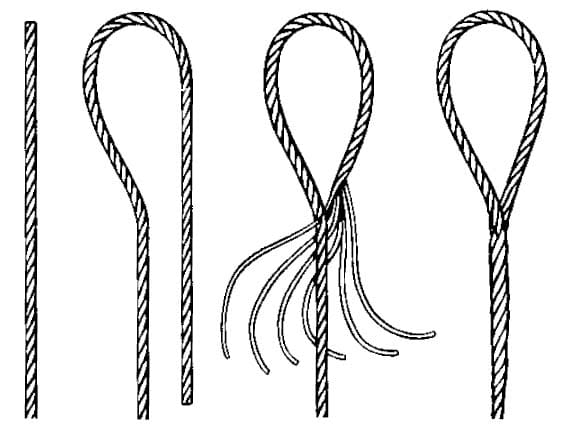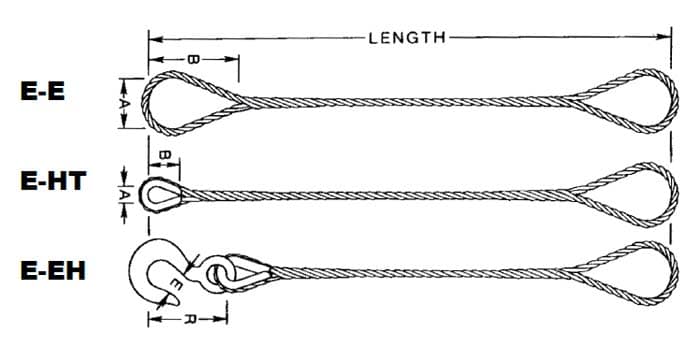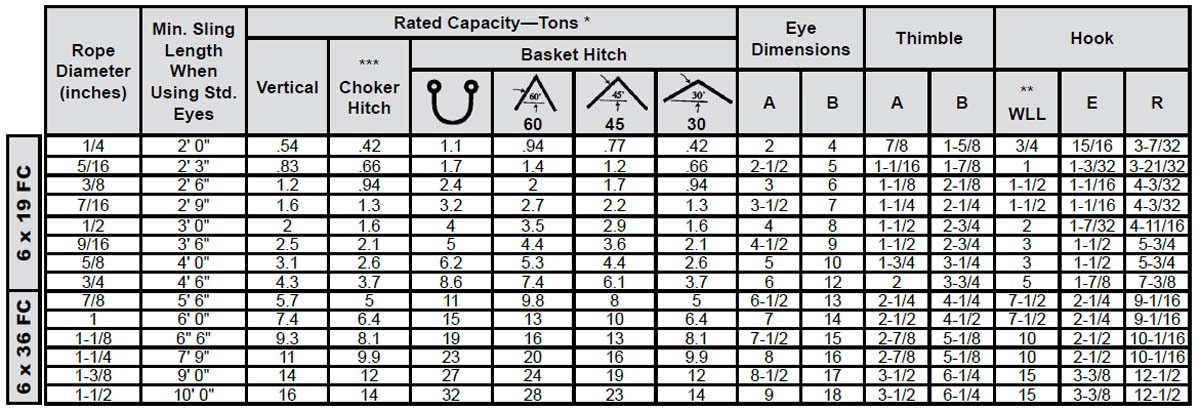Single-Part Body Hand Spliced Wire Rope Slings
Upon special request, a premium splice known as a tapered and concealed splice can be provided. Slings with rope bodies larger than 1" diameter are made only with burnt end splices. All have the same rated capacity, size for size.
The end of a single wire rope is bent back along the rope to form the eye, and strands are hand-tucked into the body of the rope in what is called a burnt end splice. With burnt end splices, the ends of strands are left exposed and cut off with a torch.

Upon special request, a premium splice known as a tapered and concealed splice can be provided. Slings with rope bodies larger than 1″ diameter are made only with burnt end splices. All have the same rated capacity, size for size.
Hand Spliced Eye
The tapered and concealed splice utilizes tension in the rope body to secure strands where they are tucked back into the rope. It needs no metal sleeve to assure firm anchoring. When “tapered” and “concealed,” the ends the of strands are tucked inward and concealed inside the rope.

Hand-spliced slings should not be used in lifts where the sling may rotate and cause the wire rope to unlay.



Rated Capacities based on pin diameter no larger than natural eye width or less than the nominal sling diameter.
Rated Capacities based on design factor of 5.
Sling angles of less than 30 degrees shall not be used.
** Working Load limit.
*** See Choker Hitch Rated Capacity Adjustment.


